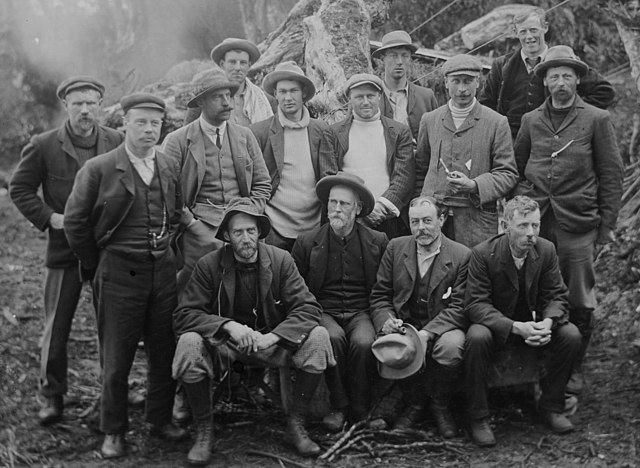Sub-Antarctic Islands Scientific Expedition
The Sub-Antarctic Islands Scientific Expedition of 1907 was organised by the Philosophical Institute of Canterbury. The main aim of the expedition was to extend the magnetic survey of New Zealand by investigating Campbell Island and the Auckland Islands, but botanical, biological and zoological surveys were also conducted.
Auckland Islands scientific personnel
Beetle (Prodontria longitarsis, Scarabaeidae) collected at the Snares on 15 November 1907
Survivors of the Dundonald shipwreck on board Hinemoa with their coracle frame
Campbell Island, New Zealand
Campbell Island / Motu Ihupuku is an uninhabited subantarctic island of New Zealand, and the main island of the Campbell Island group. It covers 112.68 square kilometres (43.51 sq mi) of the group's 113.31 km2 (43.75 sq mi), and is surrounded by numerous stacks, rocks and islets like Dent Island, Folly Island, Isle de Jeanette-Marie, and Jacquemart Island, the latter being the southernmost extremity of New Zealand. The island is mountainous, rising to over 500 metres (1,640 ft) in the south. A long fiord, Perseverance Harbour, nearly bisects it, opening out to sea on the east coast.
Six Foot Lake, on Campbell Island / Motu Ihupuku
Meteorological station at Beeman Cove (unmanned/automatic since 1995)
Campbell Island / Motu Ihupuku as viewed from the International Space Station
Chart of South Harbour, Campbell Island, 1840, by J.E. Davis, master







